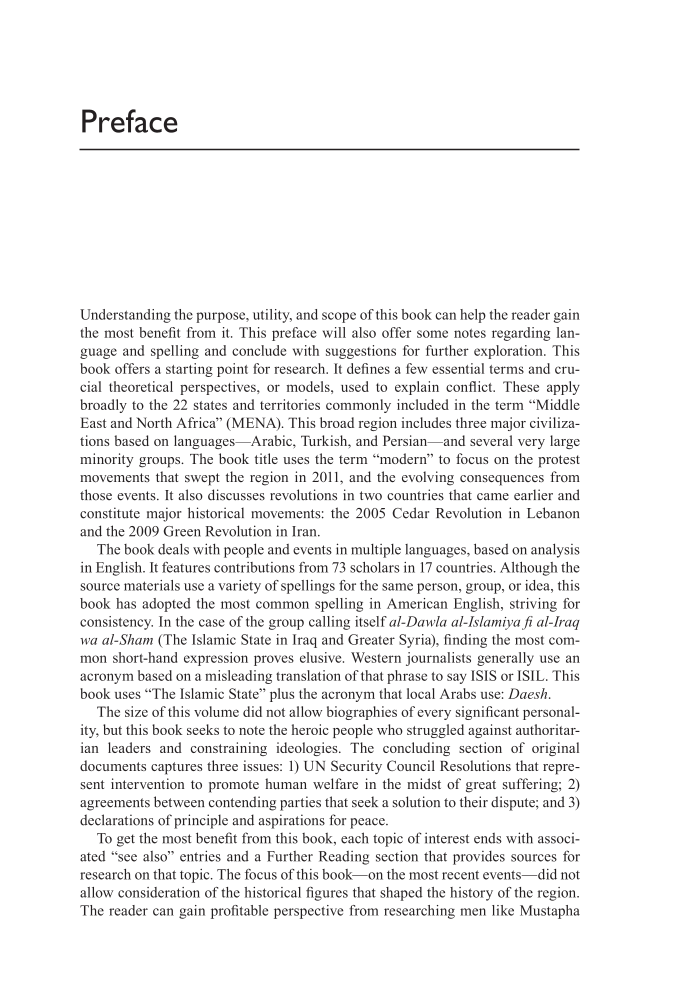Preface Understanding the purpose, utility, and scope of this book can help the reader gain the most benefit from it. This preface will also offer some notes regarding lan- guage and spelling and conclude with suggestions for further exploration. This book offers a starting point for research. It defines a few essential terms and cru- cial theoretical perspectives, or models, used to explain conflict. These apply broadly to the 22 states and territories commonly included in the term “Middle East and North Africa” (MENA). This broad region includes three major civiliza- tions based on languages—Arabic, Turkish, and Persian—and several very large minority groups. The book title uses the term “modern” to focus on the protest movements that swept the region in 2011, and the evolving consequences from those events. It also discusses revolutions in two countries that came earlier and constitute major historical movements: the 2005 Cedar Revolution in Lebanon and the 2009 Green Revolution in Iran. The book deals with people and events in multiple languages, based on analysis in English. It features contributions from 73 scholars in 17 countries. Although the source materials use a variety of spellings for the same person, group, or idea, this book has adopted the most common spelling in American English, striving for consistency. In the case of the group calling itself al-Dawla al-Islamiya fi al-Iraq wa al-Sham (The Islamic State in Iraq and Greater Syria), finding the most com- mon short-hand expression proves elusive. Western journalists generally use an acronym based on a misleading translation of that phrase to say ISIS or ISIL. This book uses “The Islamic State” plus the acronym that local Arabs use: Daesh. The size of this volume did not allow biographies of every significant personal- ity, but this book seeks to note the heroic people who struggled against authoritar- ian leaders and constraining ideologies. The concluding section of original documents captures three issues: 1) UN Security Council Resolutions that repre- sent intervention to promote human welfare in the midst of great suffering 2) agreements between contending parties that seek a solution to their dispute and 3) declarations of principle and aspirations for peace. To get the most benefit from this book, each topic of interest ends with associ- ated “see also” entries and a Further Reading section that provides sources for research on that topic. The focus of this book—on the most recent events—did not allow consideration of the historical figures that shaped the history of the region. The reader can gain profitable perspective from researching men like Mustapha
Document Details My Account Print multiple pages
Print
You have printed 0 times in the last 24 hours.
Your print count will reset on at .
You may print 0 more time(s) before then.
You may print a maximum of 0 pages at a time.


















































































































































































































































































































































































































































